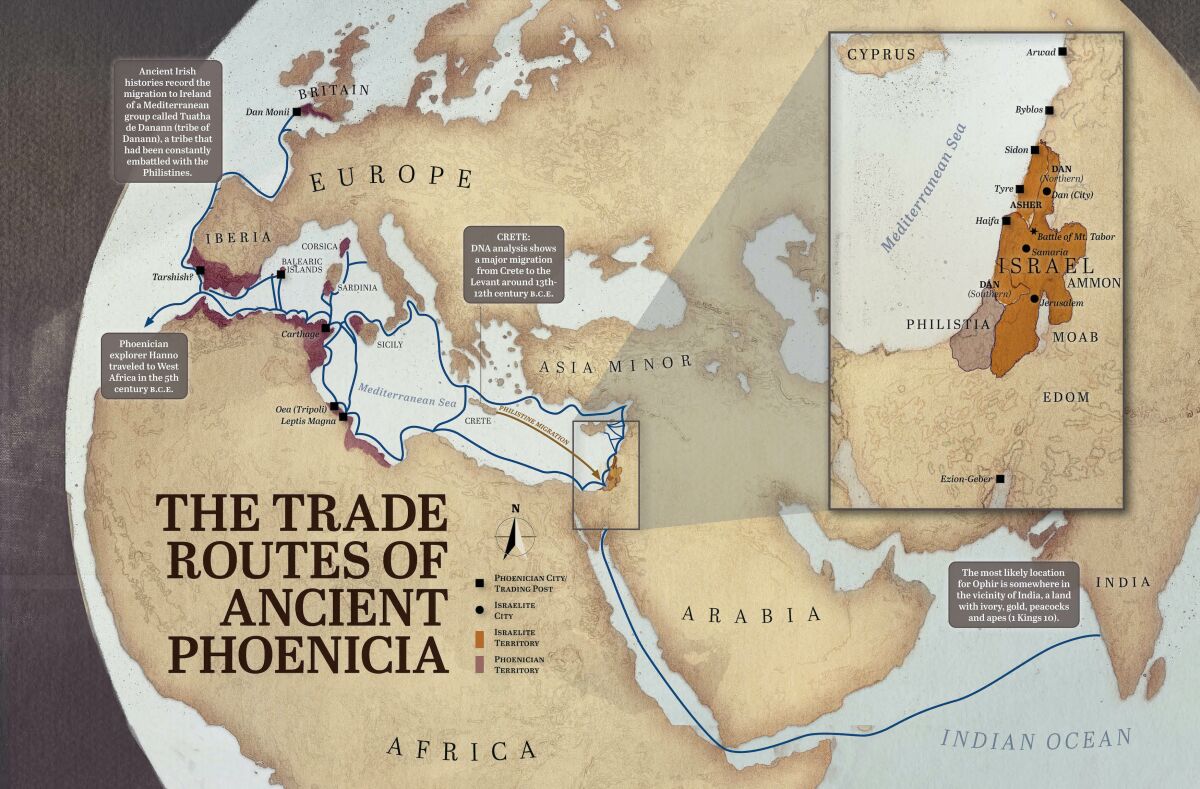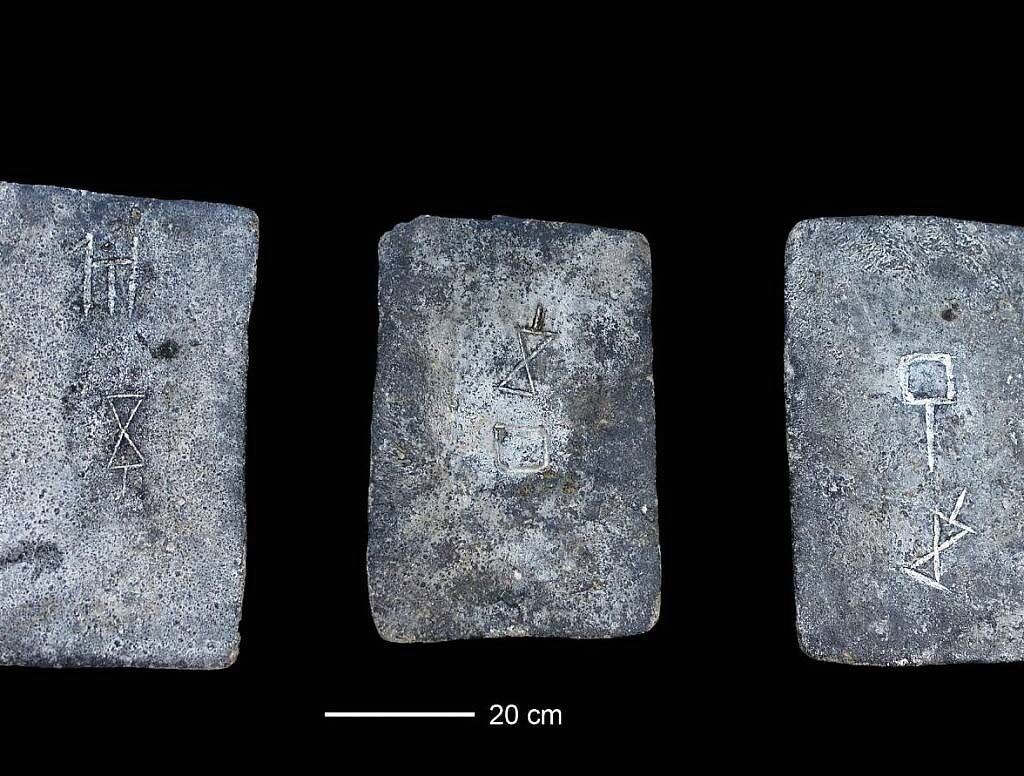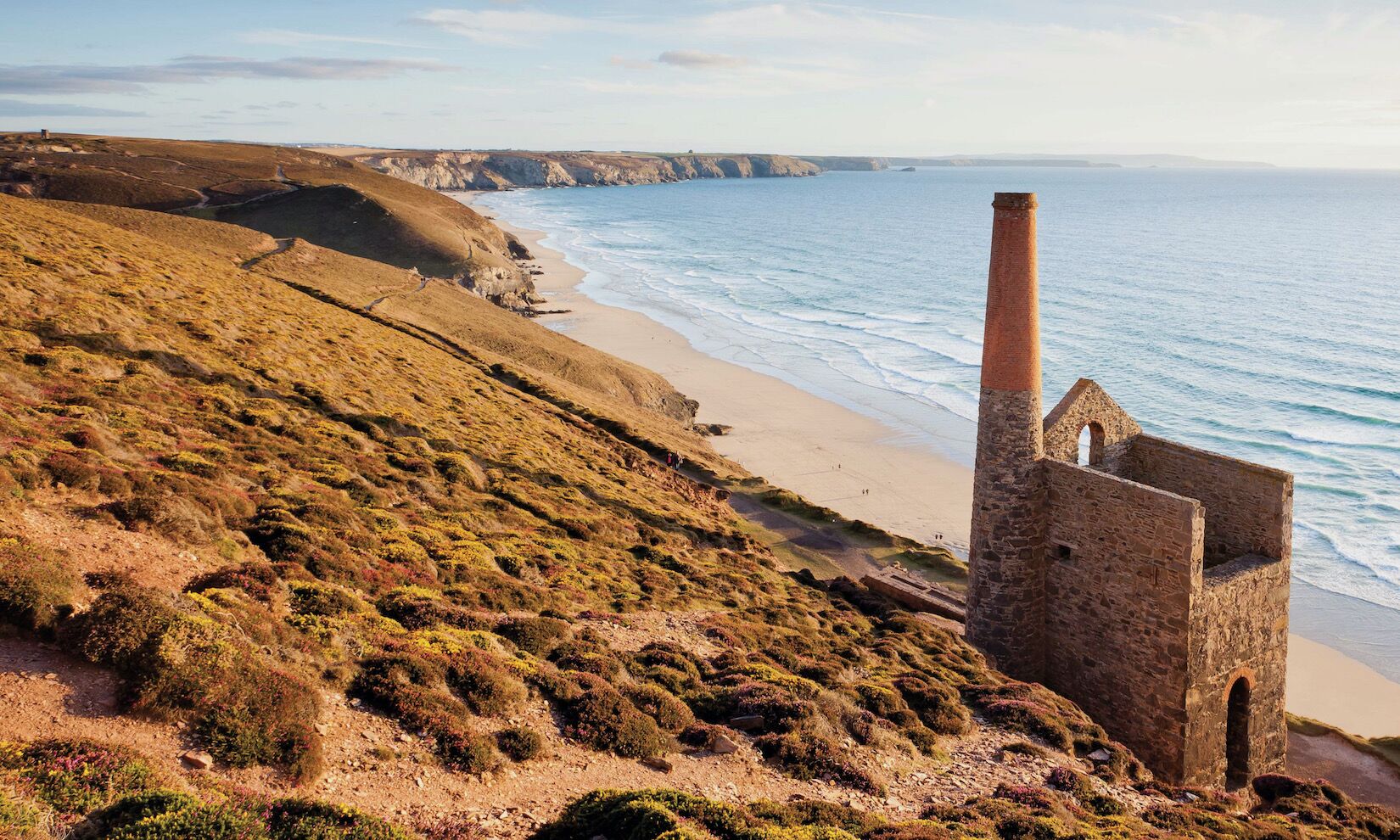Cornwall, situated in the far southwestern tip of the United Kingdom, is not a region commonly associated with the Bible. I had certainly never considered Cornwall’s biblical history. That is, until I visited the region last year with my wife for an anniversary getaway.
Trudging along one of the rugged headlands, we stumbled upon Blue Hills Tin, a boutique tin mine that sells handcrafted jewelry and trinkets made from Cornish tin. Perusing the tiny visitor center, we learned that Cornwall has been a leading producer of tin for 4,000 years. This got me thinking: Cornwall’s tin mines were active during the time of David and Solomon, and even when Israel entered the Promised Land. Is it possible that Israelite traders might have visited Cornwall to source their tin?
We know Iron Age Israel used tin. Tin is mentioned a handful of times in the Bible (see Numbers 31:22; Isaiah 1:25; Ezekiel 22:18). And the Bible has numerous references to bronze, an alloy that combines copper with tin, creating a metal that was widely used in ancient construction, decoration, weapons and tools.
But surely the Israelites didn’t travel all the way to southwest England to get their tin.
Ancient tin mines can be found all across the broader Middle East, from Afghanistan to Turkey. They have also been discovered in Spain. In the past, scholars assumed that the tin found in Bronze and Iron Age Israel (circa 1850–600 b.c.e.) originated from these local mines. Archaeologists have found tin ingots (a block of tin, similar to a gold bar) all across the Middle East.
But scientists were unable to test these ingots and learn precisely where the tin came from.
In 2012, archaeologists discovered a 13th-century b.c.e. shipwreck just south of Haifa Bay. Contained in the wreck was a collection of tin ingots. Archaeologist Ehud Galili said that the wreck was “direct evidence for marine transport of copper and tin along the Israeli coast and may indicate inland and maritime trade routes of metals in the Mediterranean.” But lacking the technology to test the tin, he couldn’t determine its source.
This changed in 2019, following the development of a new type of testing that allowed scientists to test tin ingots from several sites in the eastern Mediterranean, including the 13th-century shipwreck. A 2019 report published in a plos journal documented the results. The report, titled “Isotope Systematics and Chemical Composition of Tin Ingots From Mochlos (Crete) and Other Late Bronze Age Sites in the Eastern Mediterranean Sea: An Ultimate Key to Tin Provenance?”, revealed new information about the provenance of the ingots from the Haifa Bay shipwreck.
Where did the ingots come from? You guessed it: Cornwall, England!
“With the help of the tin isotope composition and the trace elements of the objects it is further possible to exclude many tin resources from the European continent and, considering the current state of knowledge and the available data, to conclude that Cornish tin mines are the most likely suppliers for the 13th–12th centuries tin ingots from Israel,” concluded the scientists who conducted the testing (emphasis added).
Naturally, the question arises: Who brought the tin from the British Isles to Israel?

Phoenician Traders
During the Iron Age, the northern coast of the Levant was inhabited by the Phoenicians, a seagoing people who traveled the Mediterranean and established colonies in places like Cyprus, Crete, North Africa, Spain and some parts of France. Herodotus, the fifth-century b.c.e. historian, noted that the Phoenicians even ventured to islands in the western part of Europe—the “tin islands,” as he called them.
The Phoenicians evidently made it all the way to the British Isles where they traded, and perhaps even mined, tin. The biblical record aligns with what Herodotus wrote. The sixth-century b.c.e. Prophet Ezekiel records that the Phoenicians went at least as far as Tarshish (likely modern-day Spain) in order to trade for tin, silver and other metals (Ezekiel 27:12). And Dr. Sean Kingsley, in our interview with him, gave further evidence that the Phoenicians had made it to the western edge of the Mediterranean at least as early as the 10th century b.c.e.
So the Phoenicians, close allies of Israel, engaged in the trade of Cornish tin and could have supplied Israel with the precious metal. But it’s possible that the Israelites themselves also visited Cornwall to trade tin.
Tribal Inheritance
According to biblical chronology, the Israelites arrived in the Promised Land around 1400 b.c.e. The book of Deuteronomy shows that upon their arrival, Joshua led the nation to systematically conquer the territory inhabited by the Canaanites and other regional kings.
Joshua shows that when the Israelites settled the Promised Land, the tribes of Reuben, Gad and half of Manasseh set up in territory east of the Jordan River. The other nine tribes settled on the west side of the Jordan River—inhabiting the territory all the way to the Mediterranean coast.
Following the Joshua-led initial incursion into the land of Canaan, it was left to the tribal leaders to plot and initiate the campaigns to conquer the tribal allotments. While God allotted land to each tribe, He didn’t drop it in their laps; He essentially gave them a map and told them to go get it. Virtually all of the tribes failed in this mission. None of them completely conquered the land allotted to them.
Notice what is recorded about the tribe of Asher: “Asher drove not out the inhabitants of Acco, nor the inhabitants of Zidon, nor of Ahlab, nor of Achzib …” (Judges 1:31). These coastal cities have been associated with Phoenicia, but God intended that they belong solely to the tribe of Asher. Instead of assuming sole ownership of this land, the tribe of Asher settled alongside the natives: “But the Asherites dwelt among the Canaanites, the inhabitants of the land; for they did not drive them out” (verse 32).

The tribe of Dan was likewise intended to settle along the coast, but they too were rebuffed (verse 34). Unwilling to take their assigned territory, the Danites sought an alternative territory (Judges 18:1). A contingent from the tribe of Dan traveled north of Hazor, all the way to the source of the Jordan River. As was characteristic of this tribe, they named territory they came into contact with in honor of their patriarch, Dan. Upon arriving at the northern city of Laish, the tribe conquered it, settled it and named it “Dan” (verses 29-31). Today, the area is known as “Tel Dan.”
Following biblical chronology, Dan’s northward migration would have occurred sometime during the 14th century b.c.e.—one or two centuries prior to our tin shipwreck.
Clients on Ships
Judges 4 and 5 describe a battle that occurred around 1200 b.c.e. between Israel, led by Barak and Deborah, and Jabin, the king of Hazor. This incident gives us some insight into the intertribal relations of Israel. We also see how certain tribes over time developed their own independent foreign policy.
Notice, not all of the Israelite tribes joined Deborah’s army. The Bible records that four tribes were preoccupied with other interests and refused to join the fight against this Canaanite king. Reuben was indecisive; the Bible says “there were great searchings of heart” (Judges 5:15-16). And so was the tribe of Gad, which had settled on the east side of the Jordan.
The other two tribes were Dan and Asher. “… And Dan, why doth he sojourn by the ships? Asher dwelt at the shore of the sea, And abideth by its bays” (verse 17). This is a little surprising considering both Dan and Asher were situated close to Hazor and it was in their interest that this hostile competitor be defeated. Why didn’t the tribes of Dan and Asher join Deborah’s war on Jabin?
The Bible says they were preoccupied with their interests in the ports, bays and ships (the Hebrew word for “ship” indicates long-distance vessels). The people of Dan and Asher had interests that revolved around the Mediterranean Sea and trade.
Consider too: Both of these Israelite tribes were focused on ships and trade right around the time this tin-bearing vessel sank in Haifa Bay. Did this ship belong to the people of Dan or Asher? It’s impossible to know, but the dates match.
Lawrence Stager, the late American archaeologist, gave more details about these Danites in his January-February 1989 Biblical Archaeology Review article titled “The Song of Deborah.”"In light of this background, I would translate the verse about Dan in the song of Deborah as follows: ‘And Dan, why did he serve as the client on ships?’ In this translation, yagur has the meaning ‘to serve as a client,’ as a ger, rather than the traditional translation of yagur as ‘abide’ [or ‘remain’]. By ‘client,’ I mean an economic dependent attached to a patron, a kind of economic ward.”
As Stager suggests, the people of Dan were more than likely working alongside perhaps the most famous seafaring people on Earth—the Phoenicians!
Speaking of the Asherites who dwelt among the Canaanites, Stager continued: “These villages in the hills overlook and have easy access to the rich maritime Plain of Acco. For their territorial homeland, tribesmen from Asher may have commuted to work as agricultural laborers on the Canaanite estates in the plain or as seamen and dockworkers at the port of Acco.”
Interestingly, the Bible specifically links the tribe of Asher with metallurgy. In Deuteronomy 33:24-25, Moses writes, “And of Asher he said … Iron and brass shall be thy bars; And as thy days, so shall thy strength be.” Did the tribe of Asher, known for working with metals, source tin from as far away as Cornwall?
Stager concluded his piece this way: “The reluctance of Dan and Asher to join the highlanders in this war against the Canaanites seems more understandable in light of their economic dependence on non-Israelite groups in the maritime trade. Like Reuben and Gilead/Gad, Dan and Asher had ties to non-Israelites that proved stronger than those that bound them to their tribal confederation.”
The local history of Cornwall and nearby Devon is also interesting. Historian Christopher Snyder’s 2003 book, The Britons, confirms that the inhabitants of this region were substantially different from others on the island. The people of Cornwall at this time were more similar to those living in Ireland than those living in England, who were mainly of Anglo-Saxon heredity. Cornwall has long had a separate language and had religious beliefs and practices similar to the Celts.
Curiously, the ancient name for the people living in this region also has a biblical connection. In his 16th-century history Britannia, English historian William Camden, quoting from third-century geographer Solinus, referred to Cornwall’s ancient inhabitants as Dun Monii or Dan Monii. In a footnote, Camden noted that the name Monii likely means “mines,” named after “the inexhaustible mines of tin found in those parts.”
As for the word Dan or Dun, Camden mentioned that the word “appears” to mean “hill.” But it could also just be the proper name, Dan. Put together, it’s possible that the ancient name describing the area of Cornwall could be Dan’s Mines. Recall too that the tribe of Dan had the habit of naming places after its tribal forefather (Judges 18:12, 29).
It is possible that in addition to trading in Cornish tin, either jointly with the Phoenicians or independently, the tribe of Dan might have even established a mining colony in Cornwall!
A Probable Hypothesis?
When you put all the evidence together—the rich written history of the isles, the historical record documented in the Bible and the archaeological discoveries of the coast of Haifa—a compelling picture emerges. It’s possible ancient Israel, operating either in conjunction with Phoenicia or as an independent maritime power, participated in the trading (and perhaps even the mining) of tin with Britain.
This might sound implausible for those who have been taught to believe the ancient Israelites were an insignificant confederation of backward tribes during the early Iron Age. But the facts remain: Tin ingots mined in Cornwall made their way to Israel’s coast, and they arrived at the time when the best historical source for this region (the Bible) says that two Israelite tribes were involved in maritime trade in that same area.
The evidence might not be overwhelming, but surely it’s enough to justify a change in the way we generally think about ancient Israel and to inspire a new working hypothesis: one that accepts the biblical record, which says that ancient Israel engaged in some impressive feats beyond its borders—and perhaps as far away as Cornwall, England!

